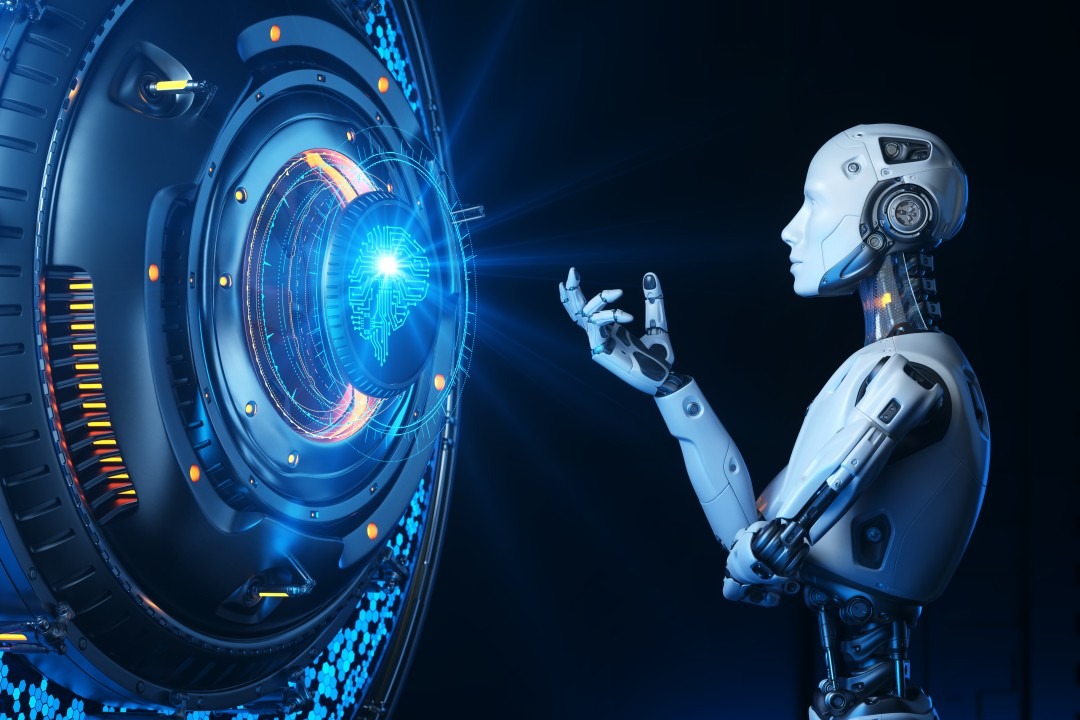

According to published reports and statistics, the number of industrial robots in the world will reach 3.4 million by 2024. It is estimated that there is one robot for every seven people, and these robots have taken over approximately 14% of the jobs worldwide previously held by humans. Reports also indicate that 90% of businesses of all types plan to use robots in their operations, based on statistics published by Coolest-Gadgets in a study titled "Robot Statistics 2024 by Revenue, Use, and Companies." Here, it is important to note that the robotics sector predates artificial intelligence. Robots first appeared in their mechanical form—without the integration of electronics and software—in 1495 AD, in the form of a fighting knight capable of performing certain mechanical movements, invented by Leonardo da Vinci. In 1785, Edmund Cartwright invented a water-powered loom, which, at the time, was considered a type of robot due to its importance in transforming industry. These estimates and reports confirm that we are witnessing a rising wave of scientific progress in the field of robotics, and that we are heading towards a future where industry and business in general thrive, while unemployment rates among humans rise. This poses challenges that require solutions that satisfy everyone. We must ensure the safe and beneficial flow of technologies, including robotics, and guarantee the human right to work. This prompts us to consider more advanced solutions related to educational trends and specializations, in line with future generations who need to reposition themselves in the labor market. First and foremost, we must understand what robots mean, their old and new mechanisms of operation, their current and future functions in the workplace, and identify the risks associated with the infiltration of robots into the world of business and industry, in addition to possible solutions.
What are robots and how do they work?
Robotics is a science, an interdisciplinary field that focuses on the design, manufacture, and operation of robots. Technically, robots are machines that perform traditional tasks that mimic those performed by humans. The first robots were simple mechanical systems designed to perform repetitive industrial tasks, such as factory automation, including welding, assembly, and sorting.
In their early days, these machines had limited capabilities, subject to the laws of static mechanics, and lacked the true ability to make decisions or adapt to changing environments. The basic components of these early robots included motors that enabled movement, sensors that provided basic environmental feedback, and a mechanical structure, often consisting of mechanical arms that moved within mathematical limits and specific angles appropriate to their assigned function. Control systems were primitive, often relying on fixed physical logic that lacked the ability to interact with or process any data from the external environment. This has limited the functionality of these machines to repetitive tasks, making them unsuitable for complex or dynamic environments.
Over the years, robotics has advanced significantly, and modern robots now incorporate advanced technologies, such as artificial intelligence, microelectronics, and advanced sensors.
These developments have enabled robots to move from simple automation to more seamless interaction with their external environment and make quick and intelligent decisions. For example, robots today are equipped with systems such as lidar, radar, and advanced cameras, giving them accurate awareness of the external environment and its changing conditions. Integrating robots with artificial intelligence and machine learning algorithms allows them to learn from past experiences to improve their ability to perform complex tasks such as autonomous navigation and interact in a way that mimics human interaction. Robots used in fields such as healthcare, agriculture, and logistics are now capable of performing challenging tasks such as surgery, crop harvesting, and warehouse management autonomously without human intervention, reflecting the progress made in this field.
Modern robots with intelligent digital systems interact with sensors, process transmitted data, and execute actions. Sensors collect data from the environment, which is then processed by algorithms, often relying on artificial intelligence, to make appropriate decisions. These decisions are translated into actual movements via motors, enabling the robot to move or address problems according to its algorithmic controls. Take, for example, smart vacuum cleaners equipped with sensors to detect obstacles and dirt. They collect and process environmental data to map the location and adjust their route based on new variables and data. In another example, robots used in warehouses collect data related to their working environment.
Atawage Technology, a professional company specializing in the digital field and artificial intelligence technologies, equipped with a team with exceptional experience in software, application design, digital marketing, maintenance, and technical support, under the umbrella of highly experienced and efficient management.
Site made with Atwage Tech Company (ATC)